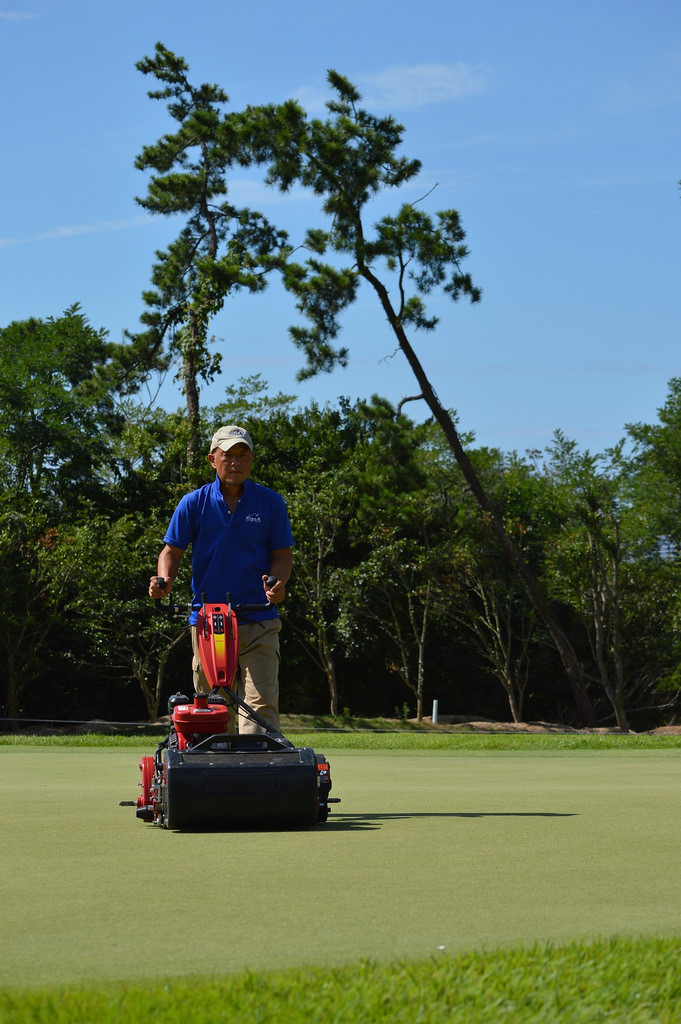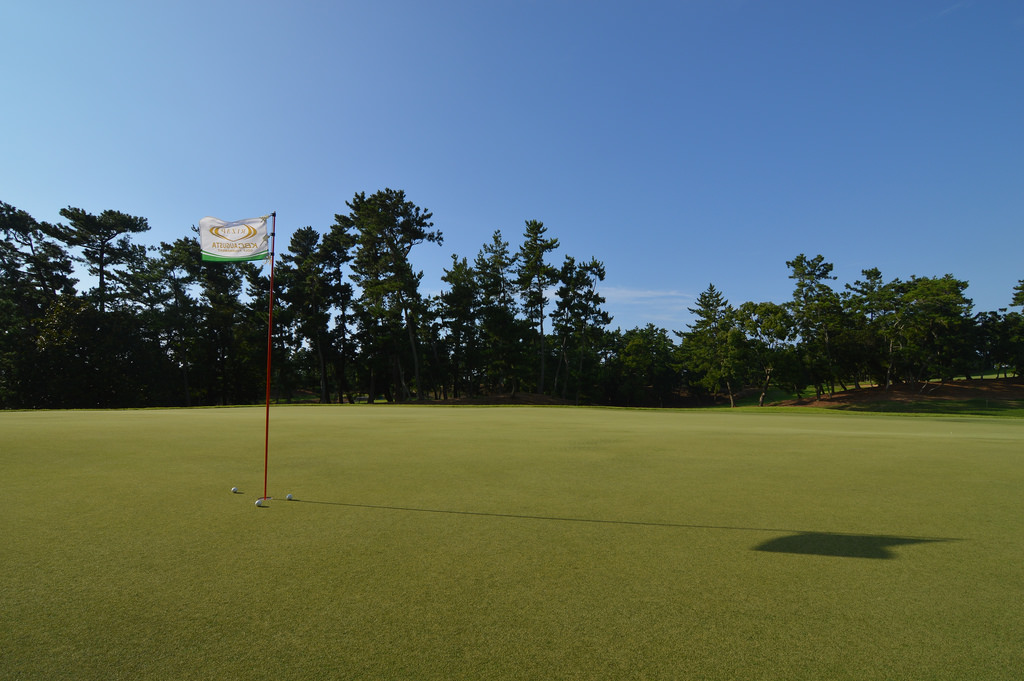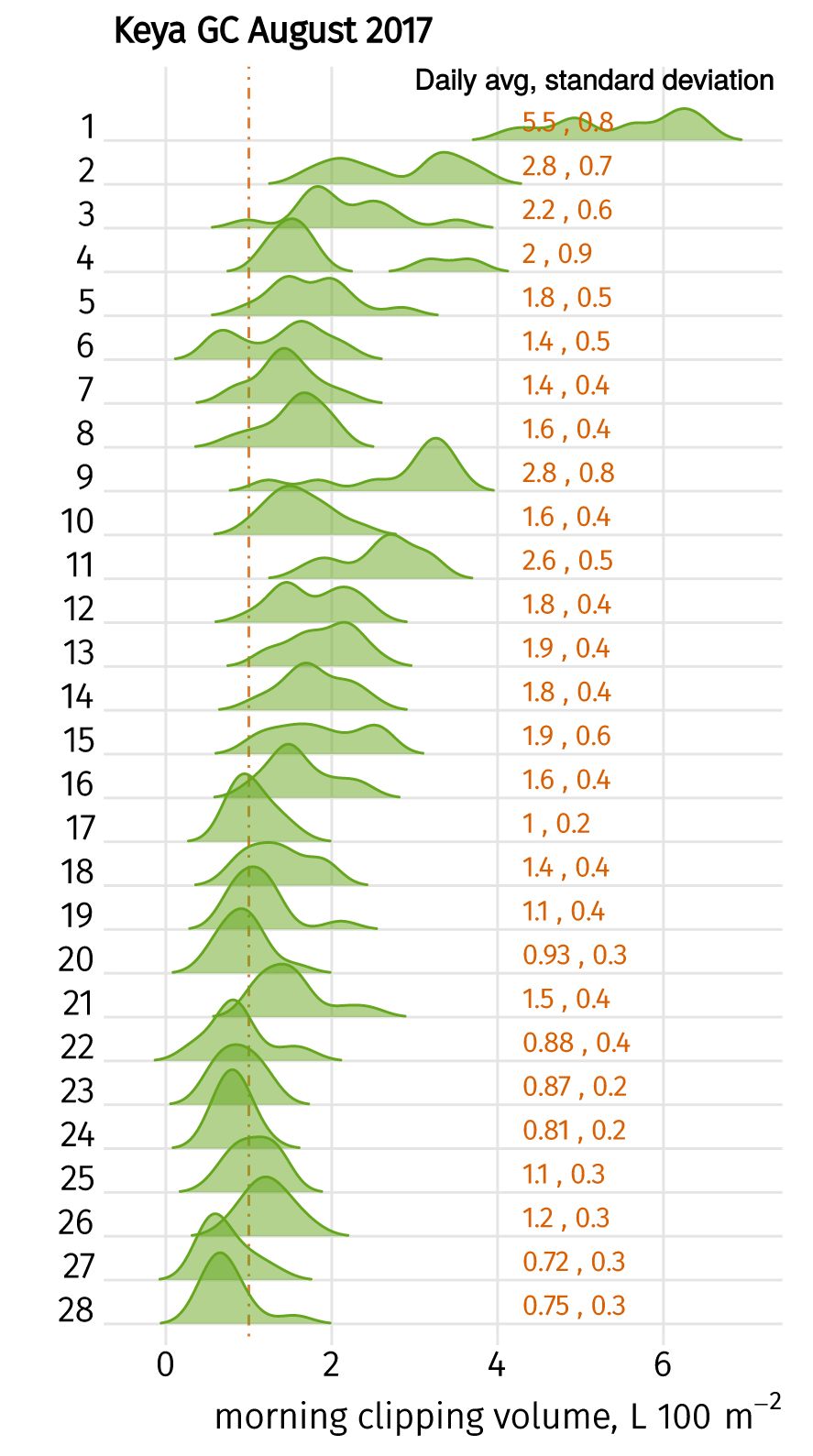Chapter 10 Flipping things around
One can look at the growth of the grass, as approximated by the clipping volume, in a couple of ways. There’s the quantity of clippings – here’s how much the grass is growing. I think that’s the typical way to look at it.

Mowing practice greens at Keya GC
But I find it useful sometimes to flip things around,18 and think about what produced that growth. Let’s say for a particular turf area, for an upcoming event, I want to have a clipping volume of about 15 mL/m2/day (1.5 L/100 m2/day). Let’s say that’s the amount of clippings I want to produce for a monthlong duration. That’ll be about 450 mL/m2/month (45 L/100 m2/month).
How much nitrogen (N) will it take to produce that much growth?

Mowing the 2nd green at Keya GC
For creeping bentgrass, I expect that will be just over 1 g N/m2. To get that much growth on korai (all the pictures in this post are korai), I expect the grass will use about 1.5 g N/m2.

The 5th green at Keya GC
By knowing how much growth one wants, and about how much N it takes to produce that much growth, one can be a little more precise with the turf management.

This chapter is from a blog post I wrote in 2017 (https://www.asianturfgrass.com/2017-09-15-flipping-things-around/). Bob Raley wrote (https://twitter.com/bobraley/status/909582862139224064) to remind me that the efficiency of the fertilizer matters. As an example, 1 gram of N from urea is almost certainly going to produce more immediate growth than will 1 gram of N from an organic fertilizer. That’s correct, and in this chapter I’m thinking more in terms of plant N use than I am fertilizer N supply. The topic of turfgrass growth, N use by the grass, and N supply to the grass from the soil and from fertilizer, is fascinating. I’ve been studying this and have a drafted but unpublished blog post in response to Bob’s reply. By the way, Bob’s article (Raley, Landschoot, and Brosnan 2013) about N and P fertilizer and Poa annua encroachment into a creeping bentgrass green is one that I take every chance to recommend. He measured an increase in Poa annua when P fertilizer was applied. Here’s a summary quote: “Results of this study demonstrate that annual bluegrass encroachment into a newly established creeping bentgrass putting green can be curtailed by withholding P fertilizer such that soil P concentrations and P uptake are below levels that foster the competitive ability of annual bluegrass.” If I were managing a mixed stand of creeping bentgrass and Poa annua and wanted to favor the bentgrass, I would withhold P, and I would also use clipping volume measurements to find a target growth rate at which bentgrass grows more than Poa annua.↩